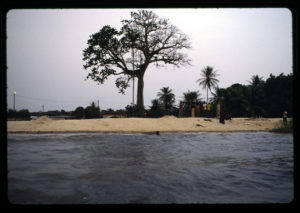
Carlos de Jesus and Claude Oudey: Amanié, What’s New?
A photography and video exhibition
September 7th – October 18th, 2017, Located at NYU | Kimmel Windows, La Guardia Place, and West 3rd Street, New York NY 10012
Amanié, What’s New? is a photography and video exhibition by Carlos de Jesus and Claude Oudey, curated by Lydie Diakhaté, that will be on display in the Kimmel Center Windows from September 7th – October 18th, 2017. The exhibition brings together compelling archival photo and film material shot 35 years ago in the fishing village of Aby in Ivory Coast, West Africa.
The greeting “Amanié” (meaning “What’s new?” in Agni, the language spoken in Aby) can also include the sharing of nightly dreams.
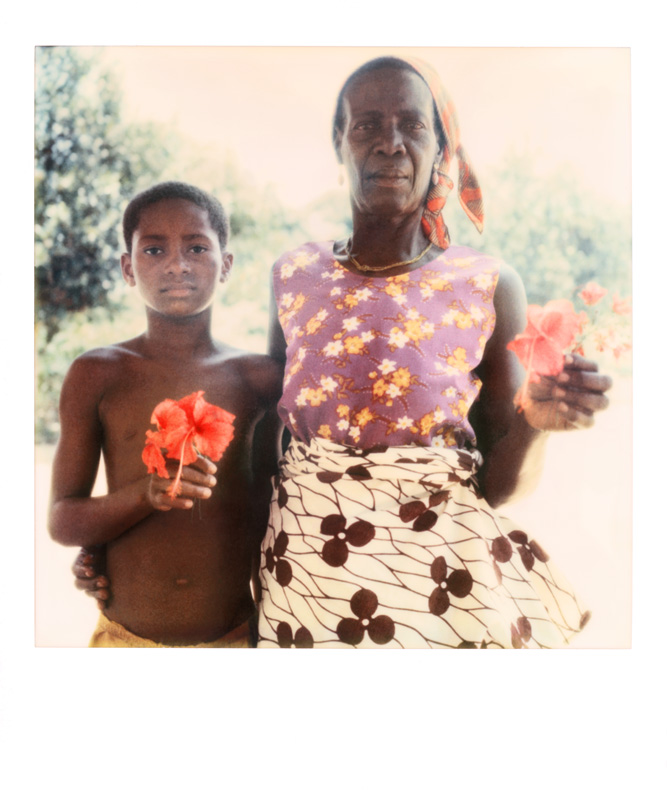
Carlos de Jesus, what’s new?
Polaroid, 1980
it was a slow long-lasting journey
a slow journey for sure
here is the account –Noël X. Ebony
In 1980, equipped with various cameras – 35 mm, Polaroid and a Super 8mm, Carlos de Jesus accompanied his friend Claude Oudey, who left his home in Paris, France and flew to Africa to meet his grandmother for the very first time. Many years before, a Frenchman arrived in her village of Aby to manage a French plantation. Claude’s grandmother had two children by this man, a boy and a girl. When he left the country to return to France, this man took his daughter with him; she was two years old. Claude’s grandmother — his Nana — had no news of her child for many years, until her grandson resolved to bring his mother back to her birthplace, to find her family and to renew contact with the everyday life of her natal village.
Carlos and Claude documented this homecoming, this meeting of generations, of races, of cultures, of geographies and histories. Inspired by the aesthetics and theories on visual anthropology of Jean Rouch, and his advice to act as “day-to-day passeurs,” they came back with film footage and a series of photographs. The images illustrate the daily life, the landscapes and the architecture of Aby. They document the mourning ceremonies after the death of the spiritual leader in the village. And they celebrate the relationships and interactions that create the texture of la vie quotidienne in this corner of West Africa. The story begins with a Polaroid portrait of Claude standing next to his African grandmother, and continues through 13 windows which include archival images, moving and still, accompanied by transcribed quotes from interviews of elders in the village and poetry by the late Ivorian writer Noël X Ebony.
Curator Lydie Diakhaté has commented that she perceives this family saga, which unfolds as the viewer walks along the sidewalks of Greenwich Village, as a “folk tale.” She explains: “I wanted to bring the viewer through the infinite circle of life, from birth to death. As you walk along 3rd street or LaGuardia Place, the narrative flows back and forth through the 13 windows. However, each window can also be seen individually as one story. Almost four decades after Carlos’ and Claude’s journey, they are bringing these archival images into the present moment. I decided to avoid the idea of taking history as a nostalgic and frozen space and instead create for the viewer an atemporal space that allows for a new vision, that addresses the continuing dialogue about the principles of life, the effects of colonialism, and the ties of love and memory that bind between continents. The project’s purpose is to invite the viewer to share what French philosopher Edouard Glissant called the “emotions of the diversity of the world.”
Moreover, Diakhaté saw the Kimmel Windows as an ideal platform for the creation of what Glissant described as a “lieu commun”—a common space where one thought of the world meets up with another thought of the world. Encountering a series of tableaux that encourage him/her to plunge into an unexpected emotional and cultural terrain, each pedestrian will simultaneously experience the history and customs of Aby and, perhaps, will be moved to confront the immense chaos fueled by the ephemerality of the world in which we live.
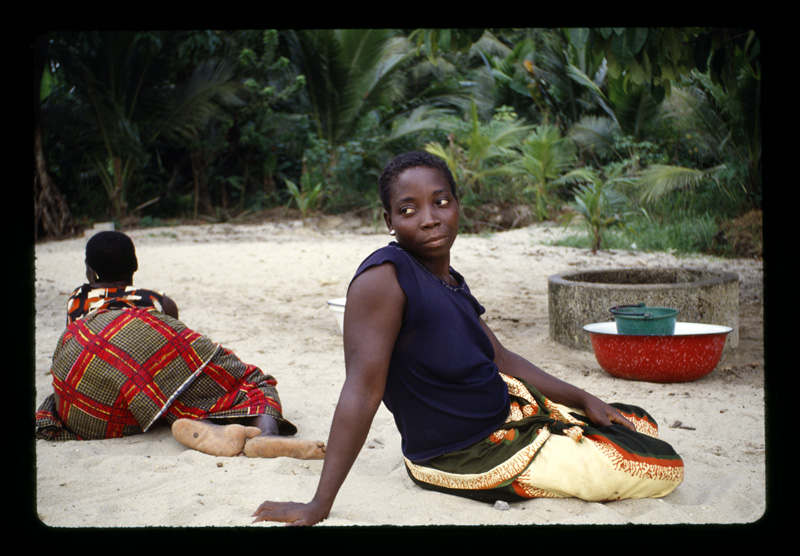
Carlos de Jesus, tell me your dreams
35 mm, 1980
…the time could one day just one day only to see
it stop for us to consider
why is it running when the race is not as long
as one day… –Noël X. Ebony
The video: The Farewells with No End (6 minutes, US 2017), Assemblage of short sequences showcasing the environment and funeral rituals in the village of Aby. (see screen shot below)
Directors video: Carlos de Jesus & Claude Oudey
Camera Super 8mm: Carlos de Jesus
Audio: Claude Oudey
Editor: Edgardo Parada
Curator: Lydie Diakhaté
Thank you to the people of Aby, Ivory Coast
© 1980-2017 Carlos de Jesus & Claude Oudey.
The credits (in general)
A story by Carlos de Jesus and Claude Oudey
Photography by Carlos de Jesus
Curated by Lydie Diakhaté
Production by Mallika Vora & Myles Golden
Prints by LaGuardia Studio
Texts:
Excerpts from Déjà vu, suivi de Chutes, Quelque part, volume of poetry by Noël X. Ebony (Editions L’Harmattan, Paris, 2010). Translated from the French by Lydie Diakhaté and Carlos de Jesus.
Excerpts from interviews made in the village of Aby, 1980. Translated from the Agni by the late Noël X. Ebony, writer and journalist from Ivory Coast, and re-translated from the French by Carlos de Jesus.
This project was supported by grants from:
The New York University Arts Council; the NYU Tisch Initiative for Creative Research; the Lower Manhattan Cultural Council; and Michael S. DiLonardo DDS.
Special Thanks: Professor Shelley Rice, for planting the seed.
© 1980-2017 Carlos de Jesus & Claude Oudey. All Rights Reserved. No part of this exhibition or any of its contents may be reproduced without their express consent.
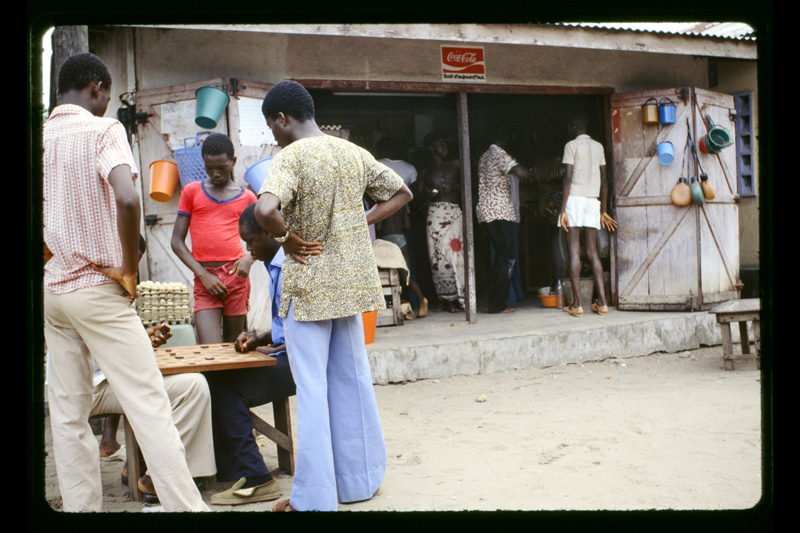
Carlos de Jesus, life around the lagoon
35mm, 1980
“One day, I fish, my brother stays
home and mends the nets. The next
day we switch.” –Village elder
Biographies
Carlos de Jesus is a storyteller and teacher who expresses himself through photography, film and writing. He is Associate Professor, Tisch School of the Arts, New York University.
Carlos de Jesus is a key participant on the First World Order Project, a long-term telecommunications project that focuses on traditional as well as contemporary expressions of African cultural practice throughout the Americas, the Caribbean, Europe, India, and the Pacific Islands, and has lectured on black American film production in Africa under sponsorship of the United States Embassy.
Carlos directed The Performed Word, a National Endowment for the Humanities docudrama on an African-American preacher. He was producer-director of New Voice (PBS), WGBH, Boston, and Sonrisas (PBS), KLRN, Austin. He was a line producer-director on the PBS/NBC series, Watch Your Mouth! for WNET/Thirteen, New York, and executive producer-director of Imágenes, for NJN, Trenton. In 1996, his video documentary That Old Gang of Mine was broadcast on Thirteen/WNET; it won the CINE Gold Eagle (1997). In 2012 he produced his latest feature-length video documentary, Garifuna Nation. His most recent artist’s book is In the Knot of Time (2015), from which excerpts are currently in exhibit through November 5 at El Museo del Barrio, Manhattan.
His fellowships include Fulbright (France), John Hay Whitney, New York State Creative Artist Program, New York State Council on the Arts (Media), New York Foundation for the Arts (Film), and Corporation for Public Broadcasting grants. Photography, film and video work has been exhibited in New York City at the Whitney Museum, Museum of Modern Art, El Museo del Barrio, International Center of Photography and the Bronx Museum of the Arts, and screened in California, Philadelphia and Washington, D.C.
Website: cdjpictures.com
Claude Oudey is a media artist. He collaborated and produced various cultural programs on radio and in print:
France Culture: Conversations with: Edouard Glissant, Maryse Condé, Jean Rouch, Fela Anikulapo Kuti.
France Culture: Reportages on African and Caribbean cultural stages.
Radio Nova: Conversations / Reportages on African and Caribbean cultural stages.
Radio Ivres: African diaspora and Caribbean music section.
Libération: reportages on Porto-Rico, Ivory Cost, Ghana, Benin, Mali.
Africa Magazine: Diasporic cultural stages, London/Paris.
Ivoire Dimanche: Diasporic cultural stages, London/Paris.
BL Press London: Diasporic cultural stages.
Cultural Publication
Le monde noir à Paris (Black world in Paris). Edition Autrement.
Art & Media
Director for « Highlife, » a short video for the Comité ethnographique du film, showcased at the Cinémathèque de Paris.
Production of radio programs « Paris la nuit (Paris by Night) » / « Dialogue dans la nuit (Dialogue in the night). »
Artistic productions: installations, collages on paper/digital, « photographies plasticiennes (contemporary and artistic photography). »
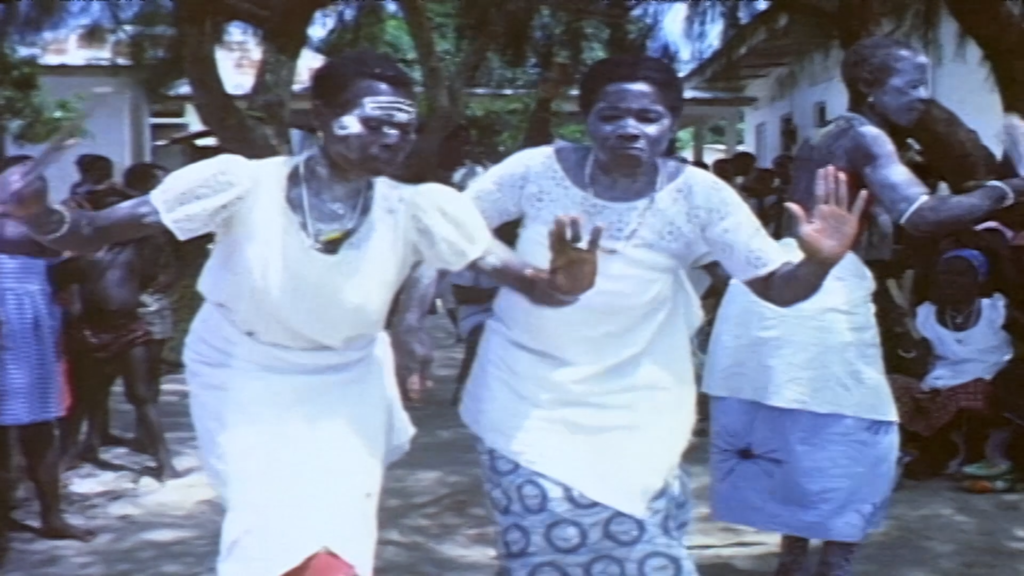
Carlos de Jesus, Screen shot of the video The Farewells with No End, 2017.
Lydie Diakhaté is an Independent Film Producer and art critic specializing in the arts and cultures of Africa and the African Diaspora. Founder of K’a Yelema Productions in Paris, co-founder and director of the Real Life Documentary Festival in Accra/Ghana (2006-2012).
Her recent works include:
The directing of the documentary “One Bright Morning: The Art of Melvin Edwards”(49 min., 2016).
The curating at the Kimmel Center Windows/New York University of: “Alien Script, Drawings by Walter Mosley” (2013); “The World of Frédéric Bruly Bouabré, and his object teaching” (2012); “Stars of Ethiopia”, a solo photo exhibition with Chester Higgins from the New York Times (2011). Publications (selection).
. “Melvin Edwards and the Poetic of a Blacksmith,” Wasafiri Magazine UK, Routledge (August 2015); Black Renaissance USA, May 2016.
. “Documentary film in Africa and the Diaspora: From Images to Emancipation” in Cinema africano: novas formas esteticas e politicas, Edition Sextante, Portugal, 2011.
. “Museum Ethics, Missing Voices and the Case of the Maisons Tropicales” in Museum Management and Curatorship, published by Routledge, Spring 2011.
